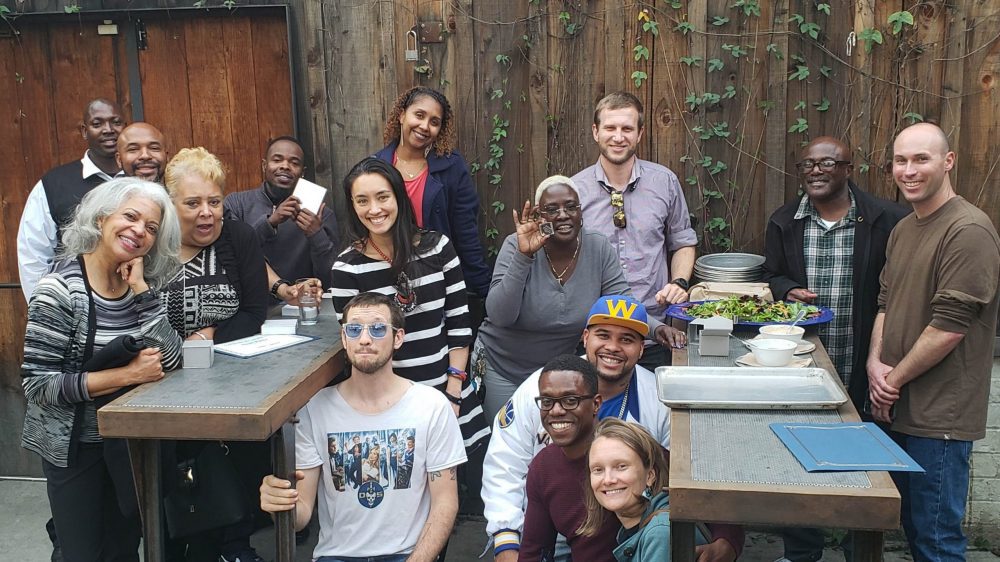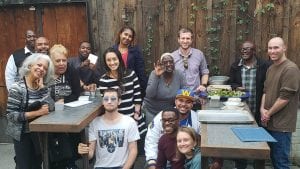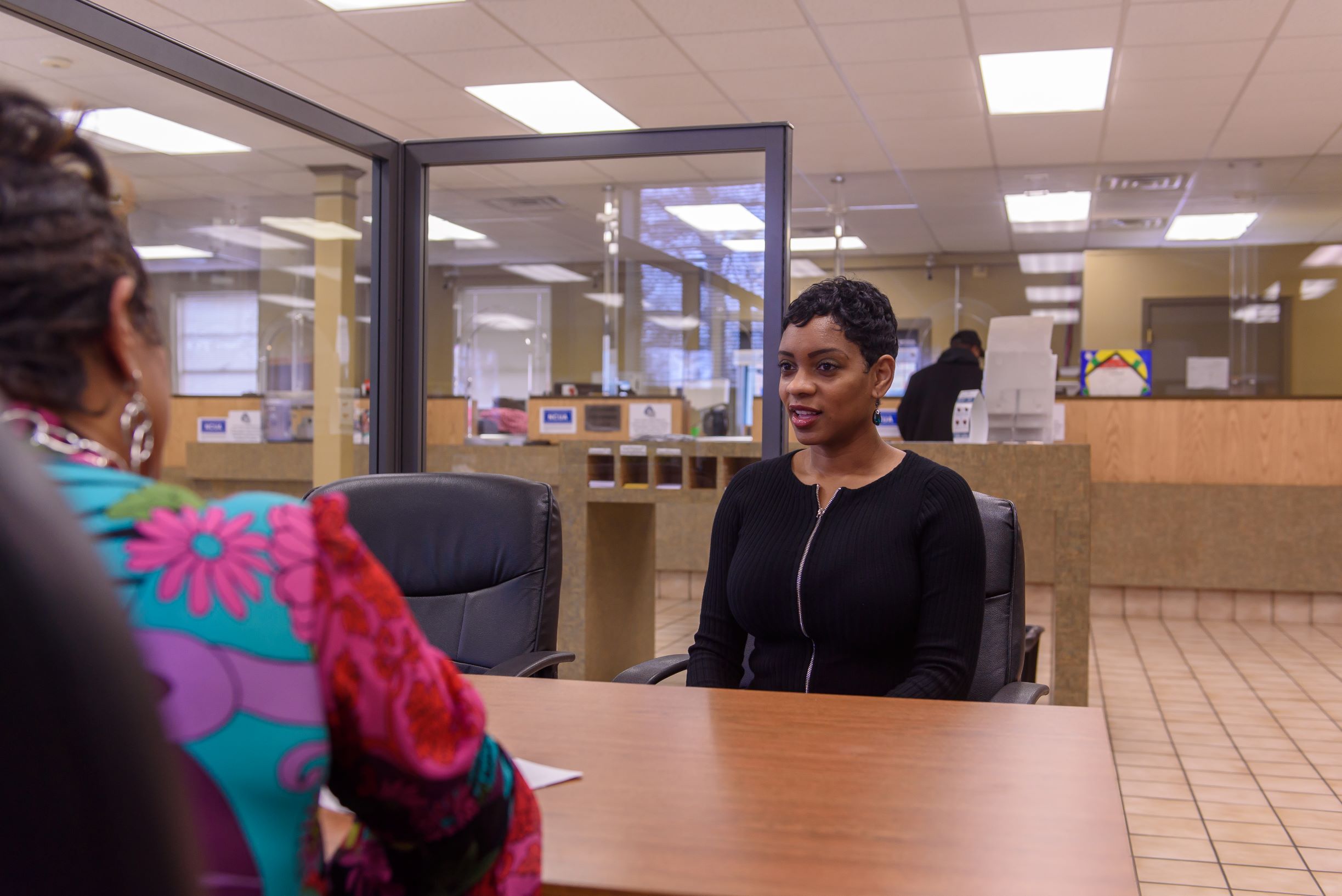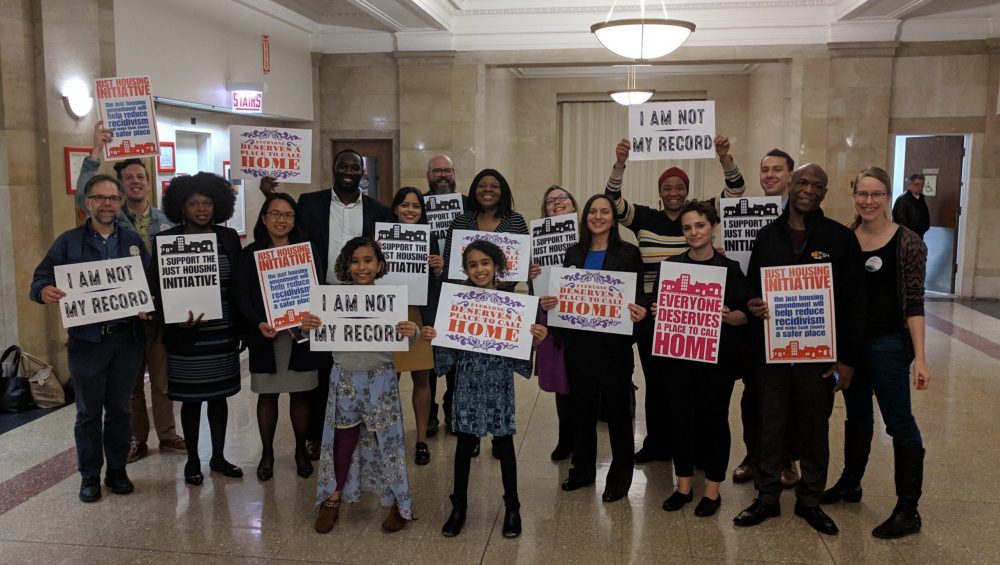I smiled with gratitude when the officer handed me $200, the money provided to prisoners the day they are released. I slipped into the clothes my mother picked out for me and sat in a holding cell for four hours. These last few hours before my release were agonizing, but a tiny inconvenience compared to the 15 years of my life I had spent in prison.
And then I was free. I cried in my mother’s arms and kissed my father’s tear-stained face. For one moment, we were suspended in time, holding each other and allowing the realization that I was freed from prison to set in with the warmth of our embrace.
Psychological ecstasy and emotional intoxication—this is my best, standardized answer when someone asks what it’s like to come home after serving 15 years in prison. I was socially expelled at the age of 18, grew into a woman behind walls, and at 33, I was finally coming home. My brain was in intense overdrive, taking it all in. People were looking at me directly in the eye, acknowledging me as just another individual out in the world. Gone was the prison garb, the barbed-wire fences, and the subordinate demeanor I had adjusted to live in.
The thought of one day coming home was enough to motivate me to become a much better version of myself long before I walked out of prison. Actually being free created a surge of euphoria. I felt like I had wings that could fly into a tornado. Anything was possible. Deep inside my soul lived years of ideas, dreams, and goals. I had a long list of to-dos and I knew I couldn’t check them all off at once, but my spirit was energized and I wanted to go, go, go.
Seventy-two hours after I was released from prison, reality began to set in. I began to organize my racing thoughts, prioritize my goals, and strategize—I needed an ID, food, clothing, a more sustainable source of income, and some serious time-management skills. I no longer had a prison schedule that instructed me when to get up, when and where to report to work, when to eat, and when to sleep. A day in the free world had so much time to fill and I often underestimated how long it would take to do things.
When a person is released from prison after serving a long sentence, a parole department often recommends a reentry or structured program to ensure that supportive services are in place to assist the parolee in their transition. I was ordered to go to a transitional housing program and the only one that accepted me in the Bay Area—where my support network was located—was HeathRight 360 in San Francisco. Unfortunately, it wasn’t primarily a reentry program; it was a residential treatment facility that has one portion of its programing dedicated to reentry. During the first few weeks there, I didn’t realize I was being institutionalized in another facility. I was still too blinded by my freedom to recognize that the housing program was an outdated approach to housing parolees. My gratitude is still very potent; I will always remember my journey and the many years I spent in captivity, and how I would not complain about small things in comparison to where I had been.
Yet I soon found myself signing a treatment plan for a drug and alcohol problem I didn’t have and attending 30-plus weekly hours of classes that, as a drug and alcohol counselor, I’m certified to teach. I had to turn down several employment opportunities because I wasn’t allowed to work until I was in the program for at least three months. Each transitional housing program has its own gradual integration schedules, usually defined into phases. The program I was in had three phases: orientation, main treatment, and reentry.
I renewed my driver’s license two weeks after coming home, but I wasn’t allowed to drive throughout the entire seven months I was in the program. The most frustrating aspect of the program was the lack of family reunification. I was able to see my loving parents more when I was in prison than when I was in the program. What does the “reentry” mean if I can’t successfully reenter society with the basic essentials to aid in reintegration?
I swallowed my irritations and stayed focused on my self-care and spiritual health, and I did a lot of perspective checking throughout my time in the housing program. As a woman of color with a criminal record, the transitional housing program was the safety net that stopped me from becoming a homeless statistic. Formerly incarcerated people are nearly 10 times more likely to be homeless than the general public, according to Lucius Couloute of the Prison Policy Initiative (PPI) in “Nowhere to Go: Homelessness Among Formerly Incarcerated People.” Rates of homelessness are especially high for those who have recently been released from prison, women, and people of color. For this harsh truth, I will always be grateful that there are housing options for people coming home from prison. Nonetheless, in the back of my mind I couldn’t help but think we could do better. I envisioned an individualized system that would tailor services to people’s specific needs.
The Homecoming Project
In 2018, I began working at Impact Justice, a national organization that focuses on criminal justice reform. I knew that my lived experiences, coupled with my education and professional skills, could contribute to building out a program called the Homecoming Project, an approach to addressing the housing needs of returning citizens that adds the missing element of community integration many housing programs lack. The program, which began more than a year ago in Oakland, California, is specifically geared for those who have served or been sentenced to 10 or more years in state or federal prison.
As part of the program, people coming home from prison are matched with a community host and live at their home for six months to optimize their stability post-release. Determining a match consists of screening participants and hosts, then sharing a participant’s application with hosts, and arranging a meeting. We undertake a thorough process to pair hosts and participants who are compatible in terms of living preferences—early birds versus night owls, smokers and not, those who love to cook, women who are only comfortable hosting other women, the role of faith in a person’s life, etc. Both parties have to agree to the match. That careful process builds trust from the beginning.
Impact Justice pays the host a daily stipend of $25 a day to house the participant. Hosts also receive an up-front payment of $250 to cover any expenses associated with preparing the participant’s room and normal wear and tear on their home.
Program participants are assigned to a community navigator, an Impact Justice employee who conducts a needs assessment and co-develops the participant’s individual reentry plan. This plan outlines a participant’s personal goals, along with tasks that directly support their reentry process, like attending job fairs, securing long-term housing, and budgeting.
Hosts are provided with professional training workshops every 45 days to educate them about the reentry population and parole conditions.
To date, the Homecoming Project has placed almost 15 participants into community-hosted homes throughout Alameda County in California. Six participants have completed their six months with the Homecoming Project, and three others have moved into their own apartments. Another three are opting to continue living with their host on their own mutually agreed-upon terms. The Homecoming Project is on track to place 25 participants into community-hosted homes by the end of 2019. The goal over the next two years is to place twice as many people annually in Alameda County, expand to neighboring Contra Costa County, and launch the project in at least one other large California county.
One participant in particular, Lynnette, is a charismatic woman who was matched with her host in December 2018. I remember her voice quivering when she contacted me and requested an application to participate. Her fear of being homeless was palpable and I remember seeing more in her eye than sheer desperation. This was a young woman who didn’t want to disappoint anyone, much less herself. I could see hopefulness in her smile when I tried to lighten the discussion around a very heavy topic: where would she lay her head in a month’s time?
She filled out an application, qualified, matched with the first host she met, and committed to a six-month-long housing arrangement. Lynette is a prime example of why this program is so effective and much needed. She served a 14-year sentence and was released to a halfway house that limited her freedom to navigate the community and properly re-establish herself. (Most probationers and parole officers prefer to place people in reentry programs, or sober living and halfway houses.) At the threat of being kicked out of the house because state and federal funding for the program was cut, she was terrified of her next steps. Even her parole agent had little to no resources to offer. Lynette was at great risk for becoming homeless.
Aside from the barriers that an individual with a criminal record must break through, the truth is that anyone starting over will have a bundle of burdens to lift and carry through these obstacles. Lynette was no exception to this rule.
One week after Lynette was placed with her host in the Homecoming Project, she secured employment as a policy fellow at Legal Services for Prisoners with Children. Since then she has been filmed in a documentary series, featured on the local news station KPIX, and serves as a radio host for KPOO 89.5. The moment Lynette’s debilitating fear of housing was addressed, she was able to reach her full potential in re-establishing herself. “Being in the program saved me,” she says.
“Everyone Died While I Was Inside”
Another participant who was recently placed with a host was too embarrassed to ask for housing, hesitated to fill out an application, and was reluctant to reveal that he was homeless. After serving 30-plus years in prison, Eddie had a lot to prove to society. He secured employment in the culinary field but lost his housing source because there wasn’t enough state or federal funding available for him to attend the program. He spent many nights sleeping on the streets of Oakland, getting up early in the morning, and heading to his fitness center (where he had a membership) to shower before taking the BART into San Francisco to work.
Situations like his are common. Not being able to get ahead of the economic curve into self-sustainability was a cost he had to pay each night as he sought a different area that would be safe enough to close his eyes and sleep. Eddie doesn’t have a drug or alcohol problem, and has no family support. “Everyone died while I was inside,” he says. His spirit lives on, out in a world that has dramatically changed, and he has to work extra hard to keep up. The Homecoming Project’s housing model was ideal for his needs and situation.
We connected Eddie to resources and services that will help him stabilize emotionally, reset his mindset from survival mode to living his life somewhat normally, and find financial breathing room so he could finally exhale. When you start from the bottom, it’s a beautiful feeling when others provide you with a ladder to help you climb up. The pace of transitioning is different for everyone, so we place great emphasis on allowing participants the ability to find their own rhythm and readjust to freedom. For instance, each participant is actively moving toward achieving specific goals, like securing identification and other documents. While we do set targeted time goals, we adjust how we support their timelines because some participants move faster and others may have more of a learning curve to work with.
Role Models
The Homecoming Project was originally focused on providing housing for a vulnerable population, and building a sustainable, community-based model for reentry. What we didn’t expect was the extent to which hosts would act as mentors and examples to their participants. Living together with members of their community provides participants with an organic demonstration of what leading a productive and healthy life truly looks like. We found that hosts were inadvertently teaching life skills to participants, acting as role models just by going about their daily lives.
Additionally, we’ve seen a shift in the narrative of what challenges formerly incarcerated individuals face when coming home, coupled with more spaces opening up to have these conversations. We’re seeing other individuals who have successfully transitioned back into society stand up and make clear statements about the need to tear down unnecessary barriers, like discrimination, which affect housing and employment. There isn’t a cookie-cutter fix for these problems. A history of incarceration is the only common denominator; each person has their own set of circumstances and needs, which require tailored care and coordination to support.
While we don’t yet have concrete numbers to compare the Homecoming Project’s housing costs with the those related to a transitional housing program, we know that by not paying the overhead costs associated with a brick and mortar building we save a significant amount of money. Those savings go to welcome kits, cell phones, food, and clothing. And funds invested in the Homecoming Project goes back into the hands of people in the community, thereby stimulating the economy at the grassroots level.
The outcomes of the program have been heartwarming thus far—exceeding what would be defined as successful. Our focal point is to see an individual succeed, but when the community embraces those who were once expelled out of society, the formerly incarcerated tap into their innate ability to thrive. They quickly accept the invitation to become a contributing member of society. They become members of your church congregation, your electrician, your radio hosts, and volunteers at food banks. They become our friends, family, and neighbors, and they blossom into incredible people I’m proud to represent, know, and serve.
The need for more homes is great. Letters of inquiry hit my desk daily, making our waiting list—which is now over 100—grow each week. There are so many individuals anxiously anticipating their release date and desperately trying to secure housing before they are paroled.
Introducing the Homecoming Program to potential hosts has been a challenge, which is why educating the community about what the program entails is key. We do this by hosting community outreach meetings to introduce the program to the public. In these meetings, we explain how the program works and share testimonials from hosts and participants about their experiences in the program. We also have a referral bonus program that incentivizes hosts to share the program with their contacts in order to receive a $200 bonus if a host they refer signs on and houses someone.
Running the Homecoming Project is more than a job for me. This work aligns with the commitment I made years ago to serve others as a way of making amends for my own past crimes. What I bring to the work from my own experience coming home after many years in prison along with my drive to change peoples’ lives for the better carries me forward. My heart swells, I smile wide, and often cry when I witness people genuinely connecting across their very different life experiences. And when someone who has spent what feels like a lifetime in prison finally gets a set of wings, we exchange a certain look, a shared understanding that they can indeed fly.







What about those with less than 10 years. My son has served 3 times. 19 months, 52 months and now serving 36 months what help is out there for him?